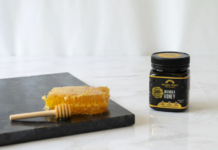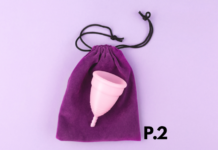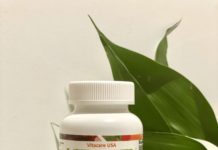In April, the US Anti-Doping Agency (USADA) announced that US long jumper Tara Davis-Woodhall was stripped of her recent national indoor title and hit with a one-month suspension after a positive test for cannabis.
The positive sample was collected after she won the long-jump event at the 2023 USA Track and Field Indoor Championships on Feb. 17.
With more and more states legalizing marijuana, the announcement caused a frenzy in the sports world, especially since Davis-Woodhall was not the first athlete to be stripped of a title or have supporters question her morals after a positive cannabis test.
Fans remember the 2021 debacle of US sprinter Sha’Carri Richardson, who won the women’s 100-meter race at the Olympic Trials and was set to go to the Tokyo Olympics, only to have her spot revoked after testing positive for marijuana. Then there was swimmer Michael Phelps, who was banned in 2009 from competition for three months and lost his Kellogg’s sponsorship after photos of him smoking marijuana were leaked online. US sprinter John Capel was also banned from competing for two years after testing positive for the second time in 2006.
With nearly half the US population currently living in a state where recreational marijuana is legal, why are the punishments for athletes still so harsh?
Why Cannabis Is Prohibited in International Competition?
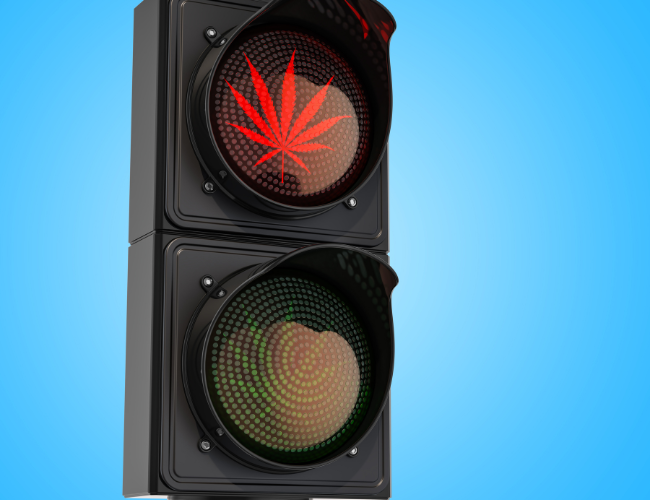
The rules around cannabis in sports come down to not only the USADA’s rules, but also the World Anti-Doping Agency’s (WADA), and affect athletes differently whether they’re in season or out of season and competing domestically or abroad.
In order for a substance to be on the WADA’s Prohibited List, it must meet two of the three following criteria: 1) it harms the health of the athlete, 2) it is performance enhancing, and 3) it is against the spirit of sport.
In 2011, the WADA published a paper in the journal Sports Medicine that says cannabis meets those criteria because, based on current research: cannabis can be performance-enhancing for some athletes and disciplines; use of “illicit drugs” is “not consistent with the athlete as a role model for young people”; and athletes who smoke cannabis in competition could “potentially endanger themselves and others because of increased risk taking, slower reaction times and poor executive function or decision making,” according to the USADA. The WADA has since exempted cannabidiol (CBD) from this category, but all other cannabinoids are prohibited in competition.
The only cannabinoid (natural or synthetic) with a set threshold limit is THC, which has a threshold of 150 ng/ML, per the USADA. That means there can be some THC in your system in competition without it causing a positive test, but if the sample goes above 150, it’s reported as positive.
That said, a lot has changed since 2011, when WADA’s paper was published. (At the time, recreational cannabis use wasn’t yet legal in any US states.) As a result of the changing climate — and after receiving multiple requests to remove THC from the Prohibited List — WADA revisited the rules around cannabis in 2023; however, the organization maintained that “the status of THC on the List should remain unchanged.”
WADA’s guidelines apply to international competitions like the Olympics and Paralympics, but they don’t impact all domestic sports leagues, such as the NFL or NBA (more on that below).
Is Cannabis Really a Performance-Enhancing Drug?
Research published in 2018 in the Clinical Journal of Sport Medicine found that cannabis offers “no direct evidence of performance-enhancing effects in athletes,” while a 2020 research review came to the same conclusion.
The latter, however, did caveat that “in some sports, advantages may plausibly be conveyed by psychotropic enhancement or pain reduction” — meaning that while cannabis may not boost someone’s cardiovascular or strength performance, it may provide a mental effect that benefits an athlete’s performance.

For example, if cannabis can distract an athlete from pain, it may allow them to perform for longer or at a harder intensity without feeling it. That said, medications like over-the-counter pain relievers or tools like kinesiology tape or muscle rubs may do the same thing.
This leads us to the question: where is the line between what is and isn’t considered performance enhancing? It’s not abundantly clear. And in regard to cannabis, specifically, what’s consistent among all studies is a call for more research before we can fully understand the effects of cannabis on both athletic performance and health.
It’s also worth noting that there are some health risks associated with cannabis use, according to the Centers For Disease Control and Prevention (CDC), including increased heart rate, changes in mood, impaired memory, breathing problems, and intense nausea.
However, many athletes are attracted to cannabis because, for them, the benefits — including relieving chronic pain, reducing inflammation, calming performance anxiety, improving muscle recovery, and managing PTSD for former athletes — outweigh the risks, Safiya Lyn, MD, integrative medical cannabis and emergency medicine physician, tells POPSUGAR.
With cannabis, “we can mitigate some of the ailments and enhance their pain control, optimize their inflammation, and help them to lead an overall better quality life,” Dr. Lyn says. “For retired athletes, you’re dealing with chronic pain spasms, and depression from losing your career — all that, cannabis can help.”
The Discrepancy Between White and Black Athletes
Although both white and Black athletes have been suspended and had titles revoked due to cannabis use, the US has a long history of placing harsher punishments on Black people for cannabis-related offenses, and there’s every reason to believe that this same institutional racism may affect the athletic world too, Dr. Lyn says.
We saw it in 2018, for example, when Serena Williams’s team told Deadspin that she was being drug tested four times more frequently than her peers, both male and female, despite never testing positive for any illegal substances in her then-23-year career.
“Historically, you can’t ignore the effects that cannabis has had on impoverished communities,” Dr. Lyn says.
“When you’ve been imprisoned for longer periods of time than others normally would have, or lost careers, scholarships, and housing due to positive cannabis testing, it can be difficult believing fairness will be given to you. History and societal conditions (labeled as a ‘pothead’ or ‘social degenerate’) absolutely have a negative impact on Black and Brown communities.”
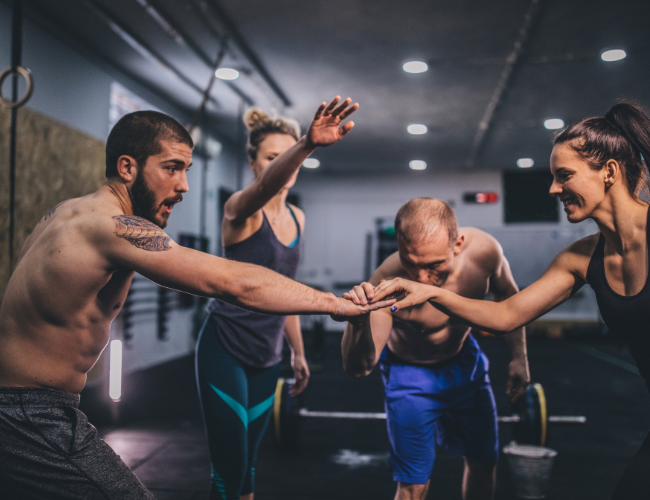
Because of that bias, there’s a lot more to an athlete’s positive cannabis test than meets the eye. It’s worth asking questions like:
- Why was this particular athlete randomly tested?
- What kind of test was it, and how accurate is that test known to be?
Although the information isn’t always public, asking these questions can help shed light on whether an athlete was wrongly tested, Dr. Lyn says.
While the current drug testing practices — including who gets tested, how often, through what method, and for what substances — should be examined regularly to avoid bias, Dr. Lyn emphasizes that the sports industry is a business with a set rule book and drug policies that have to be abided by. “I say to all my patients, even if you have a medical cannabis card, you still have to respect the drug policy of the institution you work for,” Dr. Lyn shares. “You are held and bound by the rules and regulations of the company that have been set forth prior to you even starting.”
The Future of Cannabis For Athletes
Cannabis continues to gain popularity in the US and beyond, for both recreational use and to help with various health conditions. As more people turn to the substance for pain management and to relieve stress, athletes are doing the same.
“Patients want to know how they can get back to a better quality of life and a more homeopathic approach to their health,” Dr. Lyn says. “Everyone’s wanting to do something a little plant-based, a little bit more natural, and move away from traditional pills just for their own personal benefit. The conversation has evolved.” And many domestic sports leagues are taking steps to make cannabis more accepted among their teams.
“We are being very intentional in showing how people can decompress from their day with cannabis. We’re normalizing reaching for a joint rather than reaching for a Tylenol; using a vape while walking the streets — and it’s working.”
In 2020, the NFL collective bargaining agreement for the 2020–2021 season increased the threshold for positive THC testing (from 35 nanograms to 150) and will fine players instead of suspending them, proving more leniency is on the horizon.
(Previously, the league randomly tested 10 players from each team every week and positive tests resulted in year-long suspensions.)
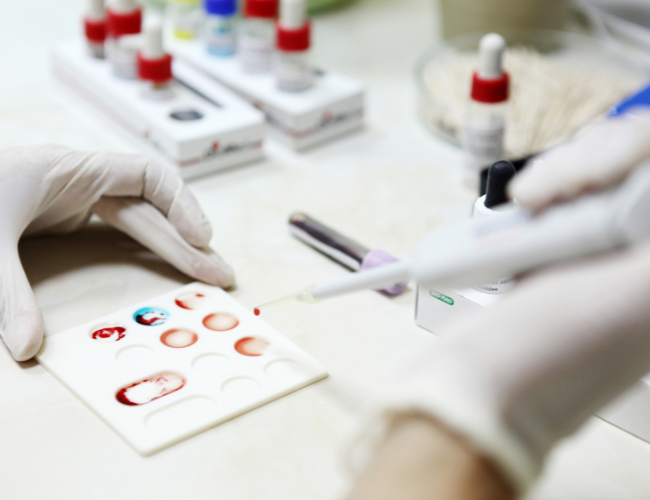
In October 2022, MLB, one of the most progressive professional sports leagues when it comes to cannabis policy, signed a CBD company to serve as the league’s first-ever cannabis sponsor.
And this year, the NBA removed athlete penalties for using marijuana and nixed the substance from their drug testing program, as reported by The Athletic. They also changed their policy to allow players to promote or invest in cannabis companies.
The decisions made by these organizations may have a ripple effect throughout the sports world, but Dr. Lyn doesn’t think changing the larger rules around cannabis for athletes will be that simple.
“We’ve been fighting for [reform for] several years,” Dr. Lyn says. “Every state has individually decided how they’re going to manage their medical cannabis program, and until we have a uniform agreement amongst the states, every state will have a completely different program.”
The way to change that? Rescheduling cannabis federally. As long as cannabis is federally illegal and a Schedule I drug, meaning it has no medicinal purpose, we’re not likely to see changes, Dr. Lyn says.
But there appears to be movement on that front. As of Aug. 30, the Department of Health and Human Services sent a letter to the Drug Enforcement Administration (DEA) calling for cannabis to be reclassified as a Schedule III drug, as reported by Bloomberg. This kicked off a review within the DEA that will investigate whether marijuana should remain a strictly controlled substance.
Dr. Lyn believes that only once it’s rescheduled will there be more opportunity for grant funding for research and thorough investment into understanding the possibilities and benefits of cannabis.
Despite what happens in the US, even harder, still, will be to change the rules in international competition, as governed by the WADA.
For athletes, the current way around suspension is having an awareness of the rules around cannabis before walking onto the field, and protection with a therapeutic exemption (TUE) if they decide to use, Dr. Lyn says. A TUE ensures athletes can be treated for medical conditions while avoiding the risk of being sanctioned.
Dr. Lyn and many other advocates in the space hope to rewrite the narrative of the professional user. “We are being very intentional in showing how people can decompress from their day with cannabis,” she says.
“We’re normalizing reaching for a joint rather than reaching for a Tylenol; using a vape while walking the streets — and it’s working. These things are becoming not as taboo as they once were. . . . We’re shifting the lens of what a cannabis user looks like.” And this, in turn, will help athletes self-medicate the way they want to — free of stigma and with fair punishment — regardless of color.
Any cannabis products referenced above are not intended to diagnose, treat, cure, or prevent any disease. The writer is not a medical doctor, and their experience is based on personal use, the results of which may not be typical or intended. The legality of cannabis products varies by state, and readers are encouraged to check their local laws before purchasing and using cannabis products. Nothing in this article should be construed as advice regarding the legal status of cannabis products. Any views expressed in this article by a third-party sponsor are those of such sponsor, and do not necessarily represent the views of HealthMedici.






